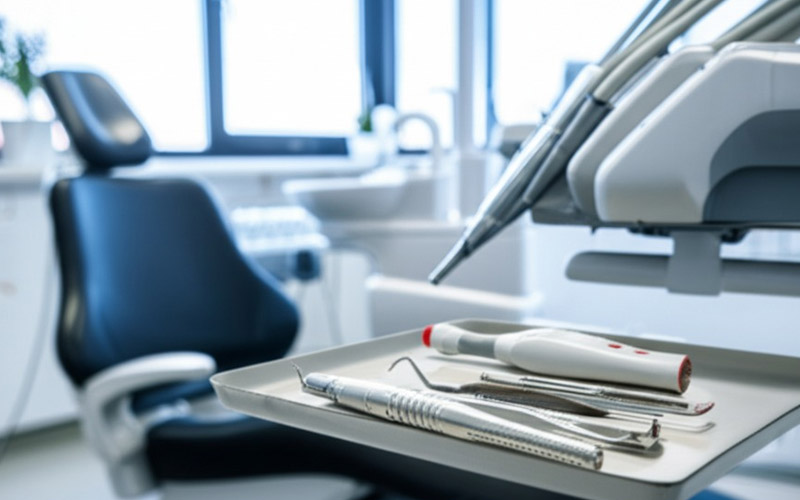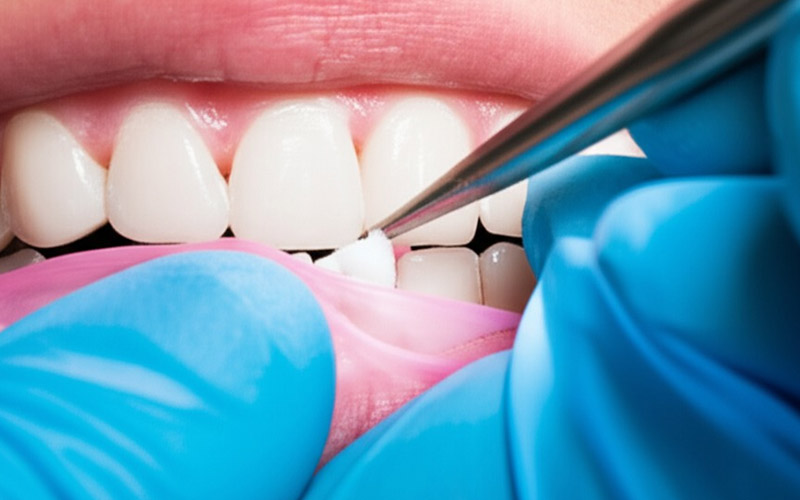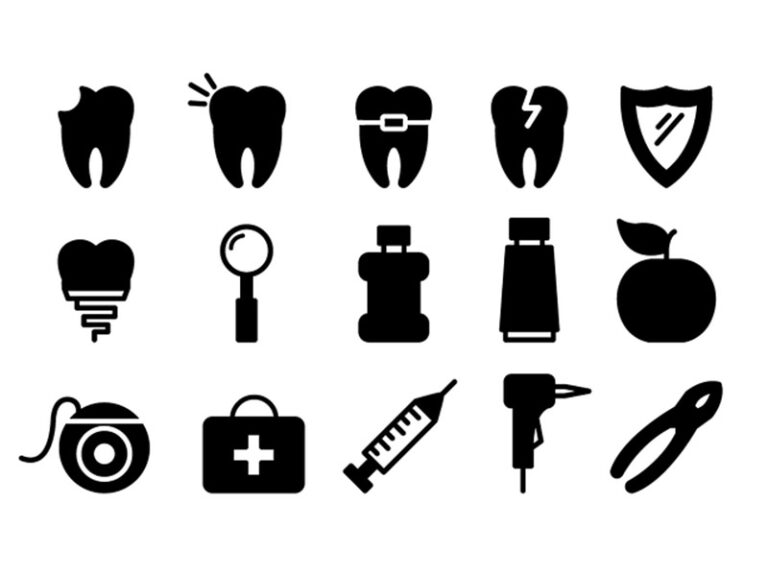
The 2025 EU Amalgam Ban: Is Your Dentistry Practice Ready for the Change?
I’ve been in the dental supply business for a long time. I remember when the biggest worry for a dentist was a no-show patient. Times have changed. A storm is coming for the world of dentistry, and many practices are not ready. On 1 January 2025, the EU will ban dental amalgam. This is not a small change. This is a fundamental shift in how you work, what materials you use, and how you manage your practice. This article is here to help you. I will walk you through what the amalgam ban means, why it’s happening, and what you can do about it. Reading this will give you a clear plan. It will help you turn a big problem into a great opportunity for your practice and your patients.
Table des matières
What Exactly is the EU Amalgam Ban of 2025?
Let’s get right to it. The rule is simple and absolute. The European Parliament voted to ban dental amalgam. As of 1 January 2025, the use of dental amalgam for dental treatment in the EU is forbidden. This formal ban also includes the manufacture and export of dental amalgam from the EU. This isn’t a suggestion or a guideline. It’s a hard stop. For decades, dental amalgam has been a workhorse material, especially in places like the UK, where it is a common material for NHS permanent fillings. Now, that era is over.
This decision didn’t come out of nowhere. For years, there has been a global push to reduce mercury pollution. The amalgam ban is part of that effort. The EU had already banned the use of dental amalgam for children under 15, pregnant women, and breastfeeding mothers back in 2018. This new rule is the final step. It means that every dental professional must stop using amalgam and find a replacement. The EU amalgam ban is a reality we all must face.
The full name of the rule makes it clear. The parliament voted to ban dental amalgam completely. This means no more ordering amalgam supplies, no more placing new amalgam restorations, and a need to manage the removal of dental amalgam and amalgam waste with even greater care. The clock is ticking, and the date, 1 January 2025, is getting closer every day.
Why is Dental Amalgam Being Banned Now? The Role of Mercury.
I often get asked, “Bob, why now? We’ve used this stuff forever.” The answer is one word: mercury. Dental amalgam is a metal alloy, and about 50% of its weight is pure elemental mercury. The global community has recognized the danger mercury poses to the environment and human health. This led to a global treaty called the Minamata Convention on Mercury. The goal of this treaty is to protect human health and the environment from the harmful effects of mercury.
The problem is that mercury from dental amalgam doesn’t just stay in a patient’s mouth. It can enter the environment in a few ways. When you place or remove an amalgam filling, tiny particles can get into the wastewater. Amalgam waste from dental offices, if not handled properly, can end up in our water and soil. Also, when a person with amalgam fillings is cremated, the mercury is released into the air. The EU decided that the use of dental amalgam is a major source of this pollution, and it’s one they can control.
So, this isn’t about the safety of dental amalgam in the mouth. Many groups, like the California Dental Association and the World Dental Federation, have long said that amalgam fillings are safe for patients. The ban is about environmental protection. The mercury in dental amalgam is the core issue. The ban on dental amalgam is a direct result of the pressure to phase out mercury use across all industries. The world is moving on from mercury, and dentistry must move with it.
I’ve Used Amalgam for Years. Is It Really a Problem?
I understand the hesitation. For a long time, amalgam was the gold standard for posterior fillings. It’s strong, it lasts a long time, and it’s cheap. I know many dentists who built their careers on their skill with amalgam. And for many years, nobody thought much about the mercury content of dental amalgam. The American Society of Dental Surgeons even declared its use to be malpractice in the 1840s, but it became popular because it was so easy and effective. Amalgam is the most common material used for fillings in many parts of the world.
The problem, as we now know, is the mercury. While it is stable once mixed into the amalgam alloy, there are still concerns. Small amounts of mercury vapor can be released from an amalgam filling, especially with chewing or grinding. The bigger issue, as I mentioned, is the environmental impact. The production of dental amalgam and the waste it creates contribute to the global mercury load. For a modern dentistry practice that wants to be seen as safe and environmentally friendly, continuing the use of amalgam fillings is becoming a problem for your image.
Think of it this way. Your patients are more informed than ever before. They read about mercury online. They hear about the amalgam ban. They will start asking you questions. “Is that filling you’re putting in my mouth the one with mercury? The one that’s being banned?” Continuing to use amalgam until the last possible second can damage the trust you have with your patients. This dental amalgam ban is a chance to show them you are a modern, forward-thinking provider of excellent dental care.

How Will This EU Ban Affect My Dental Practice, Especially in the UK?
This is where the problem gets very real for many of my clients. In the UK, the situation is critical. NHS dentistry has relied on dental amalgam for decades. It’s the standard, low-cost option for permanent fillings. The British Dental Association has warned that if a plan is not put in place, this ban breaks the back of NHS dentistry. The alternatives to amalgam cost more and can take more time to place. Without a new funding model, UK faces disruption and higher costs.
The problem is that the four UK governments appear asleep at the wheel. While the EU has a clear plan, the UK’s response has been slow. UK chief dental officers have been quiet. This leaves individual dental practices in a very difficult position. You are expected to phase out dental amalgam on the same basis as EU member states, but without the same level of national guidance or support. The ban will eat into clinical time and budgets, making it harder to see as many patients. This could worsen the existing crisis in access to NHS dental services.
For private practices, the challenge is different but just as real. You will need to retrain your dental staff on new materials and techniques. You will need to find a reliable supplier for amalgam alternatives. You will need to explain the changes to your dental patients. The entire workflow for restorative dentistry will change. The ban will only hasten the move away from the old ways of doing things, and if you are not prepared, your practice will be left behind.
What are the Immediate Challenges in Handling the Dental Amalgam Phase-Out?
The moment the ban dental amalgam rule comes into effect, you will face several immediate problems. The first is supply. Everyone will be switching to amalgam alternatives at the same time. Can your current supplier handle the sudden increase in demand? I’ve seen this happen before with other materials. When a popular product is discontinued, the supply chain for its replacement gets stressed. Prices go up. Deliveries are delayed. Your practice can grind to a halt if you can’t get the materials you need.
The second challenge is time and cost. Let’s be honest. One of the reasons amalgam has been used for so long is that it’s fast. You can place an amalgam filling quickly. Composite materials, the main alternative, require a more delicate technique and take more time. More chair time per patient means you see fewer patients per day. This impacts your bottom line. The materials themselves also cost more than amalgam alloys. This forces you to either absorb the cost or pass it on to your patients, which is a difficult conversation, especially for NHS treatment delivered in England.
Finally, there is the challenge of skill and training. Your dentists and dental staff might need a refresher or even new training on placing modern composites. Not all composites are created equal. Some are harder to handle than others. Choosing the wrong material can lead to failed restorations and unhappy patients. The handling dental amalgam skills you’ve perfected over years won’t translate directly. This is a moment where you need a partner, not just a supplier, who can help you navigate this transition smoothly. This is a core part of the problem that we set out to solve.
Are There Any Exceptions to the Ban on Dental Amalgam?
This is a key question many dentists ask me. Is there any way around this? The regulation does include a small clause. It says that dental amalgam may still be used if it is deemed strictly necessary by the dental practitioner based on the specific medical needs of the patient. However, I must warn you: do not rely on this as a long-term strategy. This exception is designed for very rare, specific clinical cases, not for business-as-usual dentistry.
Think of this exception as a temporary emergency tool, not a loophole. The chief dental officers and regulatory bodies will likely be watching this closely. If they see a practice continuing with widespread amalgam use, it will raise red flags. The administrative burden of justifying each and every use of dental amalgam will be huge. You would need to document in great detail why no other material was suitable for that specific dental treatment.
The spirit of the law is a full phase-out of dental amalgam. Trying to find ways to keep using dental amalgam is a losing battle. It puts you at risk of non-compliance and marks your practice as outdated. The future of restorative dentistry is mercury-free. The smart move is to embrace the change fully and use this opportunity to upgrade your materials and techniques. The ban dental amalgam from 1 january is clear. It’s time to move on.
What Should I Do with My Existing Amalgam Fillings and Waste?
The ban is on placing new amalgam fillings. It does not mean you must immediately start the removal of amalgam fillings that are already in your patients’ mouths. Existing amalgam fillings that are in good condition can and should be left alone. Unnecessary removal of dental amalgam can expose the patient and your staff to mercury vapor and is not recommended. You should only remove existing amalgam if it has failed or if there is tooth decay under it.
However, the handling dental amalgam waste becomes more important than ever. When you do have to remove an old silver amalgam filling, you must have the right equipment. Every single dental practice must be fitted with amalgam separators. These devices capture the amalgam particles from your wastewater, preventing the mercury from entering the public sewer system. This is not optional; it’s a legal requirement.
Your protocol for removing amalgam must be perfect. This includes using high-volume suction, rubber dams, and proper personal protective equipment for your dental staff. All materials containing amalgam, like used capsules and extracted teeth with amalgam restorations, must be collected and disposed of as hazardous waste through a licensed carrier. The focus on proper amalgam disposal will only increase after the ban. Getting this right protects the environment and shows your commitment to safety.

What are the Alternatives to Dental Amalgam, and Are They Reliable?
Here is the good news. The dental science behind alternatives has come a very long way. When I first started, the alternatives to dental amalgam were not very strong. They would stain and wear down quickly. That is no longer the case. Today’s main amalgam replacement materials are resin composites, and they are excellent. They are strong, durable, and they look great. Unlike the metallic color of amalgam, composites can be matched to the patient’s natural tooth color.
Another great alternative is glass ionomer cement. This dental material is often used for fillings in non-load-bearing areas, like on the root surfaces, and for the dental treatment of deciduous teeth. It has the unique advantage of releasing fluoride, which can help prevent further tooth decay. Newer materials, like bulk-fill composites, are also making the process faster, closing the time gap between a composite filling and a traditional amalgam filling.
The reliability of these materials is no longer in question. When placed with the proper technique, a modern composite restoration can last for many years. The key is technique. The tooth must be kept perfectly dry, and the material must be bonded and cured correctly. This is why the transition requires more than just buying a new product. It requires a commitment to excellence in modern restorative dentistry. The era of “pack and carve” with amalgam is over, and the era of adhesive dentistry is here to stay.
How Can I Choose the Right Amalgam Alternative for My Practice?
This is the most important decision you will make in this transition. You are not just choosing a product; you are choosing a partner who will help you succeed in a post-amalgam world. When my company saw this dental amalgam ban coming years ago, we focused on solving the three biggest problems that dental practitioners would face: material performance, ease of use, and a rock-solid supply chain.
First, performance. You need a material that is as strong and durable as amalgam. Our composites are engineered with advanced filler technology, making them tough enough to withstand the forces of chewing in posterior teeth. They also have excellent wear resistance and polish to a beautiful, long-lasting finish. We solved the problem of weak alternatives.
Second, ease of use. I know you’re worried that the ban will eat into clinical time. That’s why we designed our materials to be non-sticky and easy to sculpt. We developed a bulk-fill composite that lets you place and cure a 4mm layer at once, saving valuable chair time. We also provide clear, simple training protocols for your dental professionals to ensure perfect results every time. We make the transition easy.
Finally, supply. When the export of dental amalgam from the EU stops and everyone rushes to buy alternatives, our customers will have nothing to worry about. We have scaled up our manufacturing. We have invested in our logistics. We guarantee a stable, reliable supply of our materials at a fair price. We are not opportunists; we are partners. We are here to ensure that your practice continues to run smoothly through the phase-out of dental amalgam and beyond. We are the solution to the chaos of the dental amalgam ban.
What’s Your Next Step to Prepare for 1 January 2025?
Waiting is the worst thing you can do. The ban on dental amalgam is just months away. To pretend that the UK government will swoop in with a magic solution at the last minute is a huge risk. The responsibility to prepare your practice rests on your shoulders. The time to act is now.
Start by talking to your team. Explain the upcoming change to your dentists and dental staff. Assess your current inventory of amalgam and plan to use it up well before the deadline. Review your waste disposal protocols and make sure your amalgam separators are working perfectly. Most importantly, start researching your alternative materials now. Don’t wait until your current supplier tells you they are out of stock.
I invite you to reach out to us. Let my team show you how our materials perform. We can provide samples and schedule an in-office demonstration. We can talk about how to make this transition affordable and efficient for your practice. The amalgam ban is a challenge, but it’s also a chance to modernize your practice, improve your patient care, and secure your future. Let us help you make that happen.
Key Takeaways to Remember:
- The Ban is Final: From 1 January 2025, the use, manufacture, and export of dental amalgam will be banned in the EU. The UK is expected to phase out dental amalgam on the same basis.
- It’s About Mercury: The ban is driven by environmental concerns over mercury pollution, as part of the Minamata Convention on Mercury.
- NHS Dentistry is at Risk: The heavy reliance on amalgam in NHS dentistry means UK practices face significant disruption if a new plan isn’t funded.
- Alternatives are Excellent: Modern materials like resin composites are strong, reliable, and aesthetic alternatives to dental amalgam.
- Preparation is Crucial: Do not wait. Start planning now by training staff, securing a reliable supply of new materials, and ensuring your amalgam waste protocols are perfect.
- Choose a Partner, Not Just a Product: Your success depends on choosing a supplier who can offer high-quality materials, training, and a guaranteed supply chain to navigate the transition.




